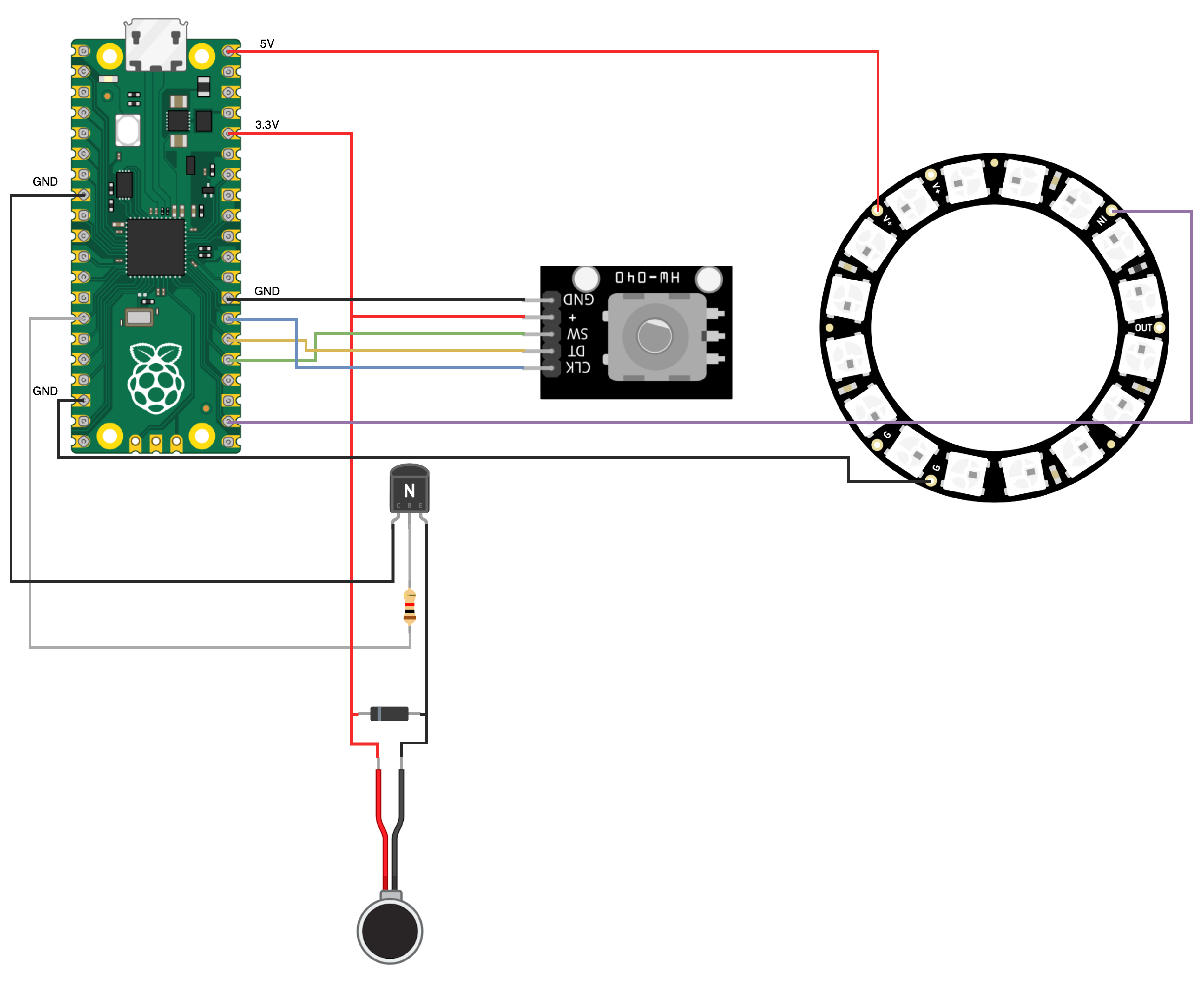This project is about functionality and keeping things simple. The electronics design isn't any different.
I'll go component by component explaining briefly what is does, what signals it needs/provides and power requirements.
The rotary encoder requires DC power (+5V and GND), and has three signals, two for rotation and one for the pushbutton switch. These are digital signals and range from 0V to VCC. As we're using a 3.3V MCU, I gave the encoders a go providing 3.3V instead of 5V, and there seems to be no issues, these work correctly.
The Neopixel LED ring requires DC power (+5V and GND), and has one input and one output. The input is a digital signal which indicates the WS2812 chips how to operate. The key here is that one signal can address many leds individually. The output isn't to be used in this project, but would be useful to daisy chain multiple rings. Although we will provide the ring with 5V, I tested the signal using 3.3V instead of 5V logic levels with no issues so far.
The coin cell vibration motor is just a regular DC motor and only takes power. It is rated @ 3V. Although I was tempted to drive the motor directly from an I/O pin, it is far from a recommended solution due to the power consumption. Although I have seen some people have done it and got away with it, we'll be using a transistor to drive the motor. We'll use an output on the pico to drive the transistor, which will in turn regulate the current provided to the motor. A diode is placed in parallel to the motor to avoid backwards-flowing currents, which can damage stuff. This is usually referred to as a flyback diode. You can refer to another schematic and a bit of a more detailed explanation here.
I'm attaching a high level diagram below.
Credits: The Pi drawing was taken from here. The encoder drawing was taken from here. The Neopixel ring, NPN transistor, coin cell motor, resistor and diode were taken from Tinkercad.

In the next log we'll bring this schematic to life.
 Maximiliano Palay
Maximiliano Palay
Discussions
Become a Hackaday.io Member
Create an account to leave a comment. Already have an account? Log In.
let us finish this project
Are you sure? yes | no